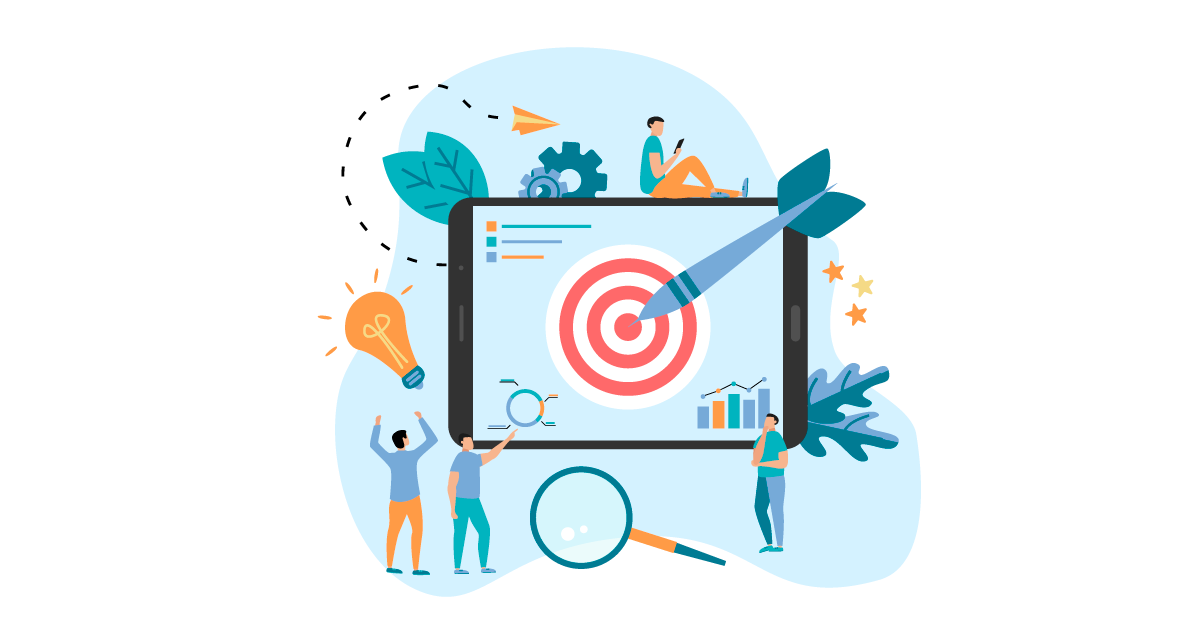Asking for a Friend… Data-Driven Basics Explained
You probably know the feeling when one of your colleagues is name-dropping terms as they are different chip flavors in the snack section… Too often, it just sounds like a pair of letters randomly put together or as something you heard in a sci-fi movie. To help you out, we’ve gathered 9 questions you always wanted to ask, but never dared to!

Data-Driven Marketing You Said..?
If you’re working with digital marketing, we can almost bet that you hear the word data six thousand times per day. And if you don’t, you should definitely add it to your daily vocabulary. Data, of all kinds, has of today become an essential part of the marketing calculation. But – what is data? And why has it changed today’s marketing approach?
Data can be understood as information about leads and customers, such as their demographic data, shopping behaviours, and purchase history. And by collecting and aggregating cross-channel data, marketers can gain valuable insights that enable them to create communication efforts customised to the customers’ wants and needs.
In the constant battle of engaging your customers, data is the present – and the future. So, instead of trying to listen to your gut feeling, and guess what your customers crave, you can base your actions on factual insights.
Customer Profile – Just Another Social Media Profile?
Likes, swipes, and shares? No, customer profiles refer neither to Facebook accounts, nor Tinder profiles. Instead, customer profiles can be understood as an encyclopedia of your customers, based on different types of customer data – that has been collected through e.g. forms, IP-addresses, or cookie consent.
With these, you’re able to collect more precise data about your customers, which makes it easier to create useful segments and personalised experiences tailored to specific individuals. You can summarise it like this:
If data is the foundation for relevance, customer profiles are the enabler.

Personalisation: More Than Being On First-Name Basis?
If you open your inbox, you’ll probably see more than a handful of emails communicating with you on a first-name basis. This is a typical personalisation example on a basic level. But this is only scratching the surface of what personalisation can, and should, be…
With customer data gathered in customer profiles, you’re able to get a holistic view of your customers. And with these insights, you can ensure that you only provide them with relevant and personalised communication efforts that really hit home.
For instance, the following formats and content can be personalised:
- Website
- Emails
- Product recommendations
- SMS
- Ads
Want to learn more? Let our e-commerce whitepaper turn you into a personalisation professional!
What Is Marketing Automation – Really?
We recognise the situation, you nod your head and understand that marketing automation has something to do with automated send-outs – but the actual concept is quite fuzzy. To help you out in these situations, we would explain it like this:
Marketing automation is a tool that uses behavioural triggers to systematically and automatically communicate across multiple channels.
Thus, it enables you to act on your collected customer data so that you can deliver customised and relevant content – at the right time.
Can everything be automated?
Okay, maybe we shouldn’t use too big words, but we would say that you can automate almost anything. Just to give you a sense of the possibilities, let us list a bunch of them here:
- Triggered emails (welcome letters, reminders, anniversaries, e-commerce flows, etc.)
- SMS send-outs
- Ad campaigns
- Social media posting
Are you interested in learning more about how to engage your leads and customers on every step of their customer journey? Then you should check out our marketing automation handbook for B2C.

Abandoned Cats? Oh, Abandoned Carts!
For marketers, an abandoned cart is just as unfortunate as an abandoned kitty. The term refers to the situation when a customer adds an item to their shopping cart but doesn’t finalise the purchase. As an example, it might be a result of too high shipping costs or a difficult payment process.
However, with defeat comes opportunities. Cart abandonment suggests an interest in the product the customer added to the cart, which opens up for a great chance to recover the lost opportunity – and increase sales.
So – what should you, as a marketer, do to get the customer back? Well, this leads us to the next question in this blog post...
What Do You Mean With “Retargeting”?
Retargeting is exactly what the name suggests. It’s online efforts, such as email send-outs or online ads, that you create to target your audience again after they’ve ended their ongoing activity with your brand: For example, abandoning a cart or leaving your website without taking any action.
Retargeting is thus a great way to create visibility and awareness about your business, reach the audience that has shown interest in your products, and boost your sales – in a cost-efficient way.
How Retargeting Works
Okay, so now you’re familiar with what retargeting is. The next step is to understand how it’s done…
Well, based on your audience’s behavioural data, you’re able to gain an in-depth understanding of your audience. And with greater knowledge about the ones you want to re-engage, you can create tailored content that reminds them of the great products or services you’re offering.

What’s The Difference Between CRM and CMS?
How can something spelled so similar, manage such different things? While a CRM system handles your external relationships, CMS is there by your side for managing the digital content.
CRM stands for “Customer Relationship Management” and is a technology for managing your business’ interactions and relationships with current and potential customers. Often, this is done with a CRM system that gives you a clear overview of your customers throughout their entire life cycle.
A tool for CRM breaks organisational silos and makes it easier for all departments to easily manage external relationships and interactions.
CMS, on the other hand, refers to “Content Management System” and is a software where you handle and publish different types of content for your website. Simply put: A true gold mine of behavioural data from your website visitors.
What Exactly Is An API..?
BRB, OMG, LOL… And API? Do you ever feel like the oldest person in the room? When colleagues throw around abbreviations as if it was the most obvious thing to say? But don’t you worry, in the ocean of shortenings – it’s difficult to learn how to swim.
In layman’s terms, API is short for Application Programming Interface, and it allows various types of software components to communicate with one another. But understanding the concept beyond the technological nitty-gritty can be hard...
That’s why our very own tech-savvy Product Manager Max Gunstone uses a colourful analogy to explain the process:
“I often compare the process behind API to that of a restaurant. When you order your selected items from the menu, you make an API call and you get your specific order served to the table – rather than the entire menu.”
Read more about Max’s insights and thoughts regarding API here.

API and Integrations – Why Are They Necessary?
Now that you’re more comfortable with the lingo, it’s time to meet API’s second cousin: Integrations. Integrations can be understood as the connectors between different systems, such as your CRM or CMS system and your all-in-one marketing platform.
The common denominator of API and integrations is thus, that they both deal with the automatic transference of data. By integrating your different systems, which are full of data about your existing and future customers, you’ll be able to gain a holistic understanding of your target audience.
Just to name a few of the advantages with integrations:
- Increased efficiency and better organisational results
- Alignment between marketing and sales departments
- Higher relevance towards your customers
Time To Impress During Lunch Hours...
The world of digital marketing is a jungle of terms, abbreviations, systems, and concepts – so it’s no surprise that one can get lost in there. We truly hope that this blog post has helped you through the shrub of questions and that you’re ready to take the step into the future called data-driven marketing.
Do you have any more questions? Don’t hesitate to reach out to us!